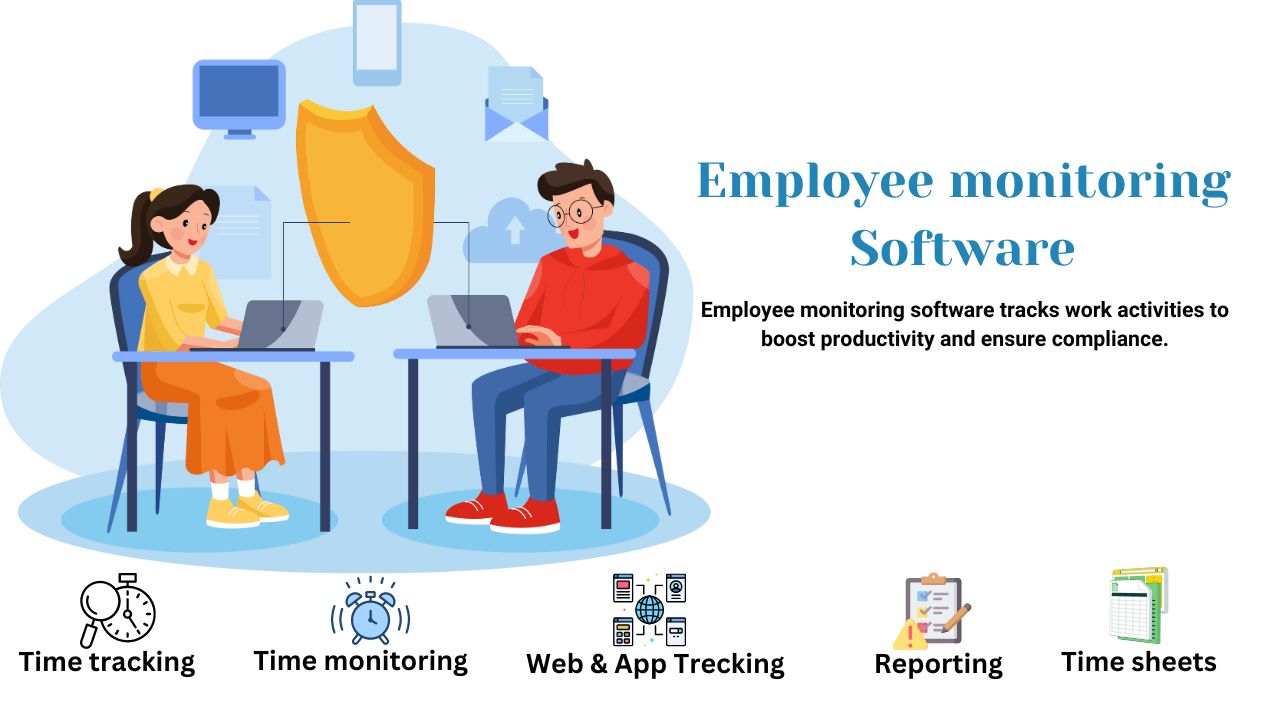
We created some headings to understand the Employee Monitoring Actual Working
Introduction
Employee monitoring software is designed to track and monitor various activities and behaviors of employees within an organization. The specific functionalities and features of such software may vary, but generally, here's how employee monitoring software works:
Installation:
The software is typically installed on the computers, laptops, or mobile devices used by employees. In some cases, it may be installed on company-provided devices, while in others, it could be installed on personal devices if employees are required to use them for work.
Data Collection:
Once installed, the software collects data on various employee activities. This data can include computer usage, internet browsing history, application and document usage, keystrokes, emails, chat logs, and more. Some software may also capture screenshots or record videos of the employee's screen.
Monitoring and Analysis:
The collected data is then monitored and analyzed by the software. This can be done in real-time or through periodic reports. The software may look for specific keywords, patterns of behavior, or anomalies to identify potential issues or areas of concern.
Productivity Tracking:
Employee monitoring software often includes features to track and measure productivity. It can log the time spent on different tasks or applications, track active versus idle time, and generate reports or metrics to evaluate individual or team productivity levels.
Policy Enforcement:
Employee monitoring software can help enforce company policies by identifying policy violations. It can detect unauthorized software or applications, inappropriate website access, or the sharing of sensitive information. Some software may also provide alerts or notifications to managers or HR personnel when policy violations occur.
Remote Monitoring:
With the increasing popularity of remote work, employee monitoring software may include additional features to monitor off-site employees. This can involve tracking their internet usage, logins, and application usage, as well as ensuring compliance with security protocols.
Data Privacy and Legal Considerations:
It is essential for organizations to consider data privacy laws and regulations when implementing employee monitoring software. Companies must inform employees about the use of monitoring software, clearly define the purpose and scope of monitoring, and ensure compliance with applicable privacy laws.
Activity Tracking:
It monitors real-time activities, capturing screenshots,tracking active application usage. Some tools even record employee screens or take periodic snapshots.
Reports and Analytics:
The collected data is compiled into reports that provide insights into productivity levels, website usage, and application activity. These reports can help managers identify trends and areas for improvement.
Alerts and Notifications:
The software can send alerts if certain activities or behaviors are detected, such as accessing unauthorized websites or exceeding time limits on specific tasks.
Privacy Settings:
Advanced tools offer settings to ensure employee privacy by excluding personal activities from monitoring and providing transparency about what is being tracked.
If you still have some questions, please email to hello@workforcenext.in.
Still not answered? Connect with our security expert.
Try to connect with our technical expert to understand more about the security feature
Contact Expert